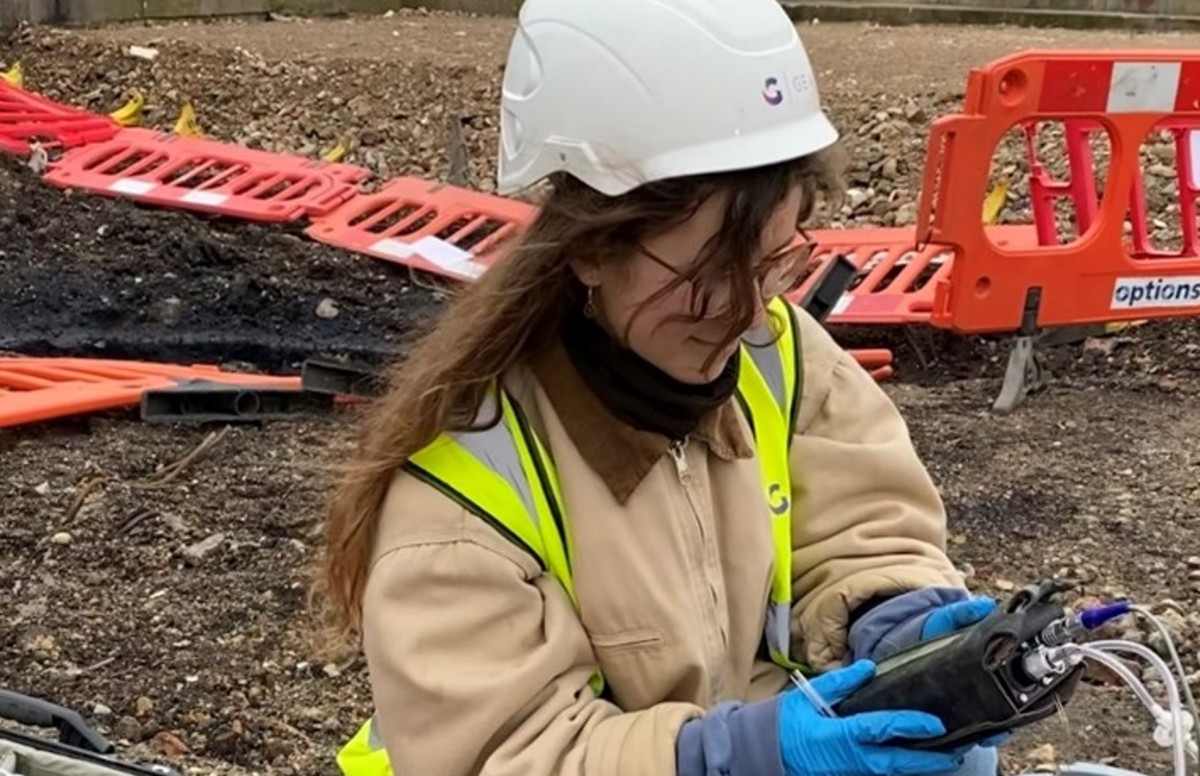5 Simple Techniques For Geotheta
5 Simple Techniques For Geotheta
Blog Article
Some Known Details About Geotheta
Table of ContentsA Biased View of GeothetaWhat Does Geotheta Do?Some Ideas on Geotheta You Need To KnowThe Greatest Guide To Geotheta
They team up with civil engineers, structural engineers, designers, and various other professionals to incorporate geotechnical considerations into the overall task design and construction procedure. This requires effective synergy, sychronisation, and communication to make sure that the geotechnical facets straighten with the job goals and satisfy regulative requirements.Mining & Materials Design: Principles of exploration, infiltration rates, and factors affecting the choice of drilling approach. Blasting methods in surface area and below ground workings. Mechanical and continuous techniques to fragmentation, consisting of longwall shearing and fullface boring.
Modelling of piece and particle dimension circulations; comminution as a transfer function. Comminution technology: crushing, grinding, dimension category. Integrated evaluation of fragmentation and comminution procedures. Supplied by: Mining & Products Design.
More About Geotheta
Bachelor's level programs in civil, geotechnical, geological, and ecological design typically last four years and include general education and learning courses in English, social scientific research, and the liberal arts, as well as training courses in innovative mathematics, structural geology, and fluid mineralogy. (https://filesharingtalk.com/members/599923-geotheta)
Geotechnical design entails the evaluation of the soil and rock problems at a certain site, and their implications for the development of that website. As a lot of frameworks rely upon the ground for assistance, it is without shock that a comprehensive understanding of the ground problems, and the suitability of foundation systems, are crucial to the long-term stability and efficiency of the structure or framework.
Being experts in the investigation of geological formations and ground behaviour, geotechnical engineers do scientific investigations and testing to understand the effect these geological formations may carry the design and construction of structure, civil and infrastructure projects. This proficiency is vital for the layout and building of structures, roadways, passages, dams, bridges, and water and sewage systems.
The geotechnical team at Douglas Partners regularly speak with engineers, style designers, programmers, and home builders to make referrals on layout and growth propositions to make certain that the constructed structures are appropriately created for the ground conditions. As an example, the design of footing systems requires to take into consideration the weight of the framework, the capacity of the ground to sustain that weight along with motion tolerances and efficient building.
The Facts About Geotheta Revealed
This task is greatly simplified by the use of our Douglas Map geospatial platform which makes this information easily available in an easy to make use of web browser user interface. A geotechnical engineer will certainly guide the drilling of boreholes and examination pits to gather soil and other examples, and additionally assess surface area functions and ground exposures to form a geotechnical model of the subsurface problems.
Depending upon the job kind and ground conditions experienced, lab screening may to name a few things analyze strength, compressibility, reactivity and/or leaks in the structure of soil and rock samples. After this information is collected and collated, the outcomes are utilized for a geotechnical version of the website, which is generally offered my review here as areas throughout the website.

A geotechnical examination naturally can only analyze the ground conditions at the places drilled or excavated. All-natural variants in dirt and rock conditions can happen across a website and in between examination areas. It is as a result excellent method that the geotechnical designer be retained throughout building of the job to provide on-site verification that the ground conditions come across are constant with the expectations and recommendations provided in the geotechnical investigation report.
How Geotheta can Save You Time, Stress, and Money.
Geotechnical engineers use their thorough expertise of dirt and rock to assess danger and resolve issues on diverse infrastructure projectsGeotechnical engineering is a specialist branch of civil design which looks at the practices of planet products and the application of soil and rock auto mechanics. Tailings Engineer. As a geotechnical designer, you will examine the physical, mechanical and chemical residential properties of soil and rock in order to make foundations, retaining frameworks and earthworks
Geotechnical engineering is closely connected to and overlaps with, both engineering geology and ground engineering - https://slides.com/geotheta. It's possible to specialise in geotechnics or benefit a geotechnical business however be referred to as a design geologist or a ground engineer. As a geotechnical engineer, you'll need to: construct and keep partnerships with customers and other experts associated with the website, throughout each projectmaintain safety and security requirements on site be mindful of cost implications when you make recommendationsstudy geological maps and aerial photographs from a variety of sources and from different time periodsexamine building plans to see how possible they are based upon your understanding of the siteinvestigate threats or geological risks for the sitesearch for eco delicate functions, such as landfill beginning to establish factual and expository ground modelsplan area investigationsdrill and analyse samples of bedrock, soil, groundwater and additional products supervise other experts on sitesolve technological problems as they develop, such as unanticipated frameworks at drill sitesmonitor problems during and after building and construction to make certain structures are stable in the brief and long termadding data collected on site to your initial researchcreating geotechnical estimations, illustrations, and 2 or three-dimensional computer system versions analyzing the datamaking recommendations regarding the suggested usage of the site

Report this page